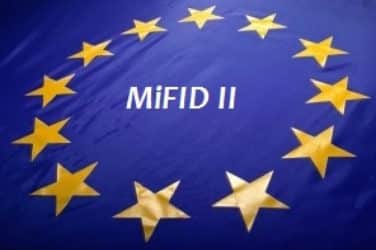If the recently leaked MiFID II documents are to be given any credence, it would suggest the use of commission dollars to pay for research is not entirely likely to be banned under the newly proposed MiFID II guidelines. However, delinking research payments from the value and volume of trade execution is here to stay, in all likelihood. The newly revised draft language suggests that Commission Sharing Arrangements (CSAs) may be allowed to continue under the new regime; albeit in some reformed manner. All of this suggests a slight climb down from the previous extreme view that all research and related services would be disallowed for payment using trade commissions.
Demand for Transparency – Commission “Unbundling”
Over the years, institutional investors have negotiated hard with their brokers to lower the “full service” commission rates and have gone a step further to ask them to disaggregate the commission charges into its various components. The unbundling of commissions is intended to create more transparency and accountability around the broker-asset manager relationship, while ultimately demonstrating transparency by the asset managers to their institutional clients.
Asset Managers in turn are increasingly under pressure to improve fund performance as well as provide greater transparency around their trading activities and the use of such trading commissions to “pay for” services to feed the investment process. Active asset managers have failed to deliver alpha and this under-performance has brought about greater scrutiny of their activities by their clients.
Research Pricing in a Post-MiFID II Environment
Unbundling pressures led to a squeeze on the use of commissions to pay for research. But, use of trading commissions to pay for research was not questioned. Under the MiFID II deliberations so far, the use of commissions to pay for “research services” has been called into question and this has rattled the industry as a whole – both sell-side and buy-side. However, as we highlighted above, there has been some climb-down from that position since then.
The discontinuation of use of trading commissions to pay for research services (including Corporate Access) raised significant commercial viability questions on the future of sell-side research.
One question that is tough to answer is: How do you put a price tag on third-party research and research related services (i.e., broker provided research services) when it involves a recurring service commitment? Additionally, how do you account for “value-add” in the investment decision-making process by a service provider on an on-going basis?
Under the MiFID II environment, the menu-based pricing mechanisms that some have talked about is fraught with its own challenges, especially given the “recurring” dimension to this service proposition (from a broker to an asset manager). One will have to move to a price tag for covering a specific sector or a market and that “coverage” definition has to be clearly defined to remove ambiguity and confusion; and value-add over time needs to drive the compensation conversation for such services. Secondly, even after you have addressed the definition, some aspects of the “recurring service” may NOT be approved for payment using trading commissions (if trading commissions are not entirely banned from making research payments) and therefore have to be paid for separately.
Subsequently, you will have to monitor these “recurring services” for the effectiveness and quality, either to increase the payment or lowering it to the service provider. Such adjustment have to be as far as possible objective and not subjective, but one cannot 100% eliminate subjective qualifications. This no doubt will warrant changes to the present periodic broker review process within asset managers.
The Future
If the regulatory mandate is also to create a level playing field between broker-dealers, investment banks and independents, then careful attention has to be paid to ensure there are no cross-subsidization taking place in broker-dealers and in particular investment banks when it comes to pricing their research service (to asset managers), as invariably that would be hurt the independent research industry.
Broker-dealers, investment banks and independent research providers all have to look at their value proposition closely and align their resources to provide a cost effective service to asset managers. Competitive pressures will remain and therefore value proposition to build sticky customer relationships is going to be vital for sustainability. Additionally, asset managers have to evolve in the ways in which they assess their service providers.
While the purpose of MiFID II in the context of research and research related services has been to create transparency and a more competitive market structure across Europe, we wonder if the unintended consequences of many of these moves will deliver quite the opposite result, when it comes to the market for research and research related services.





